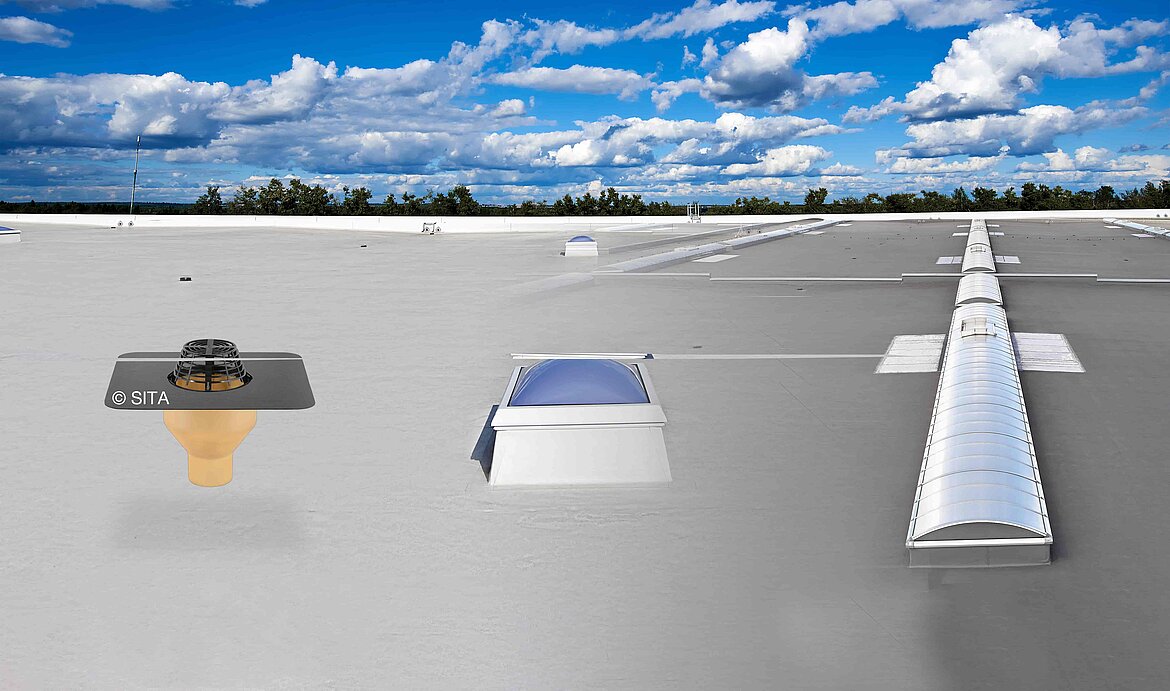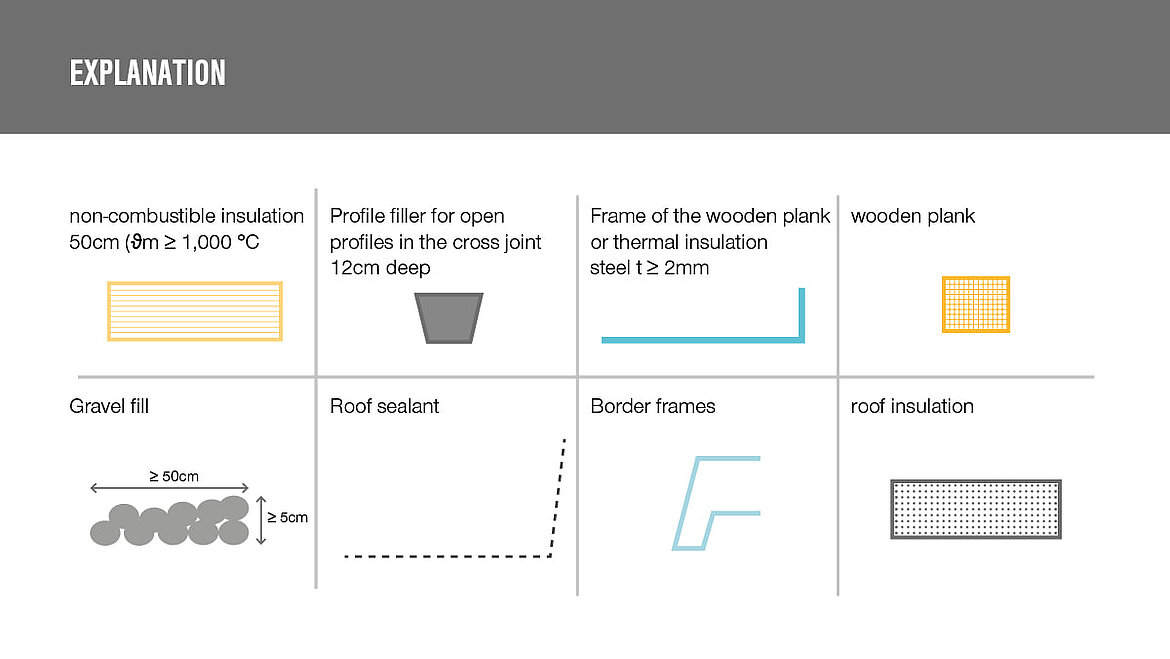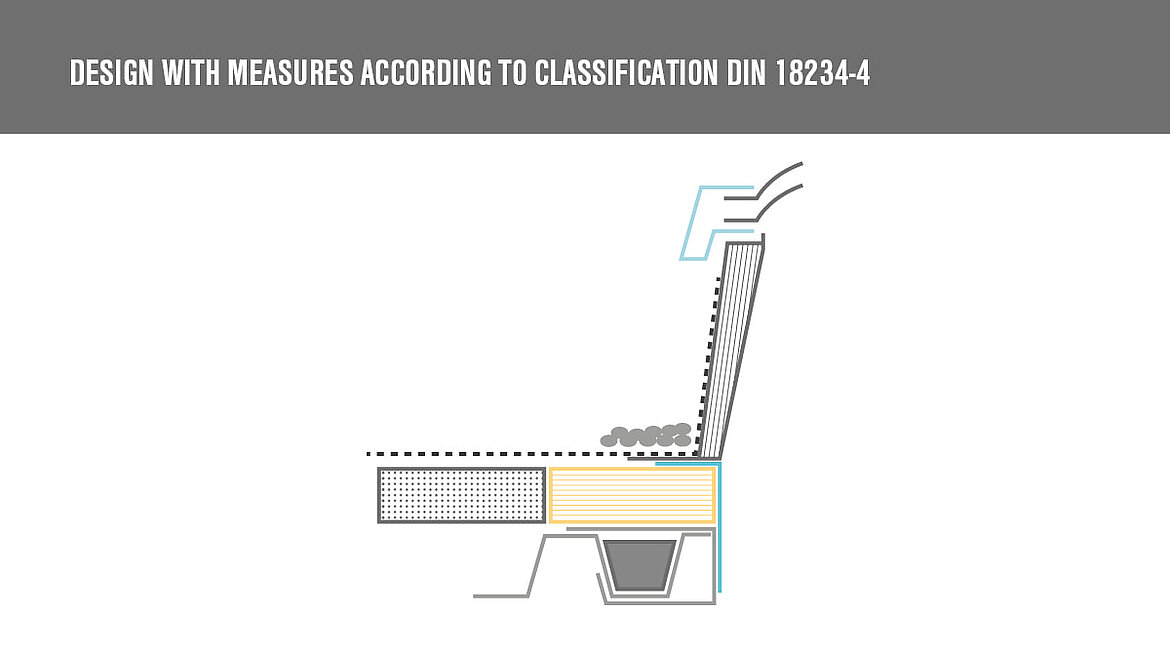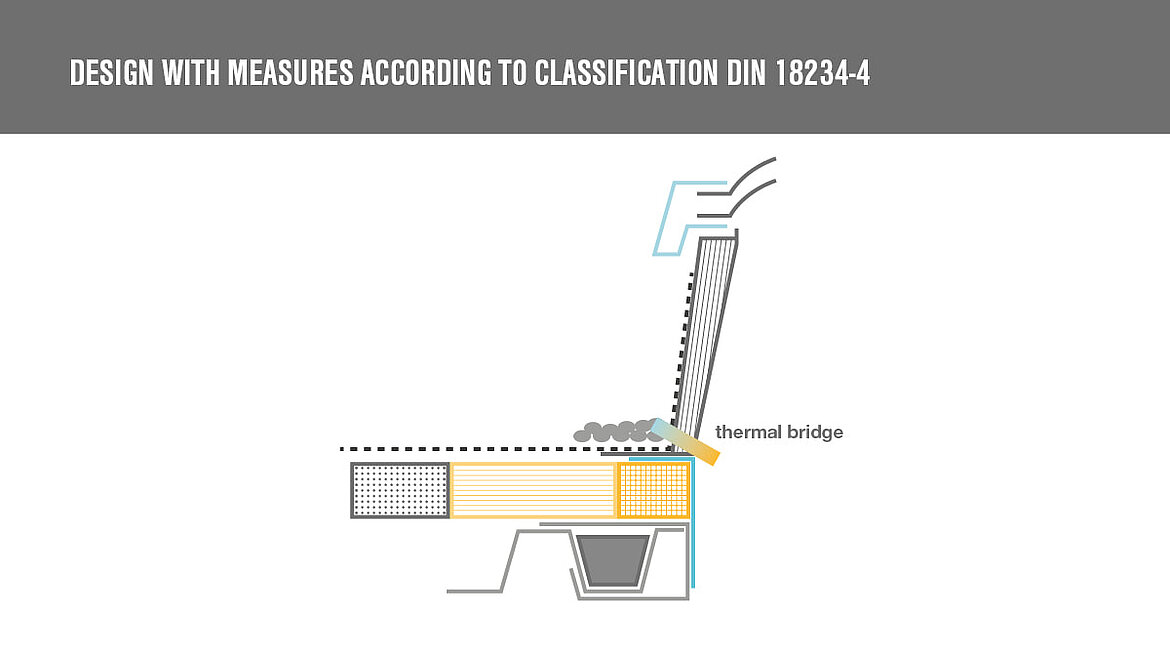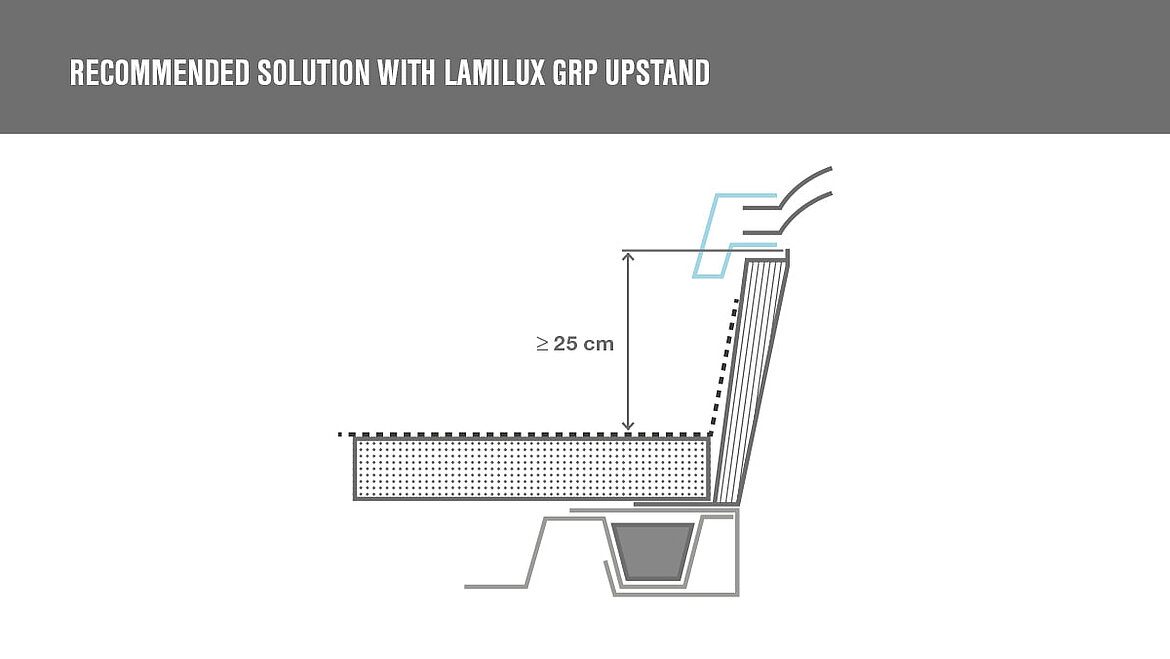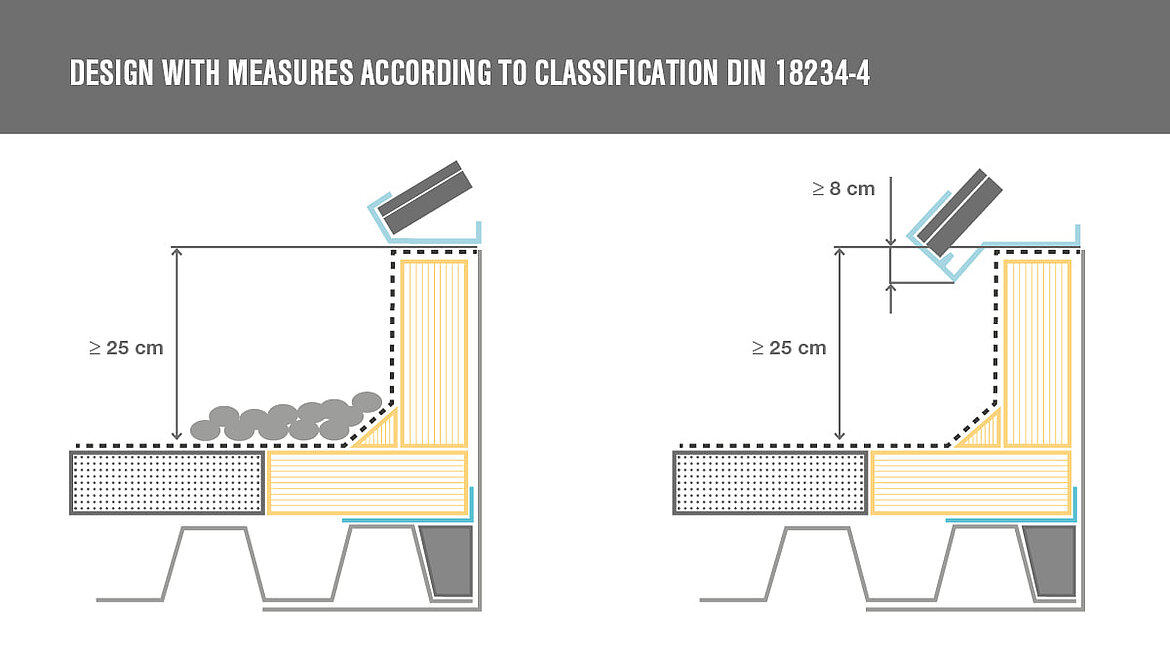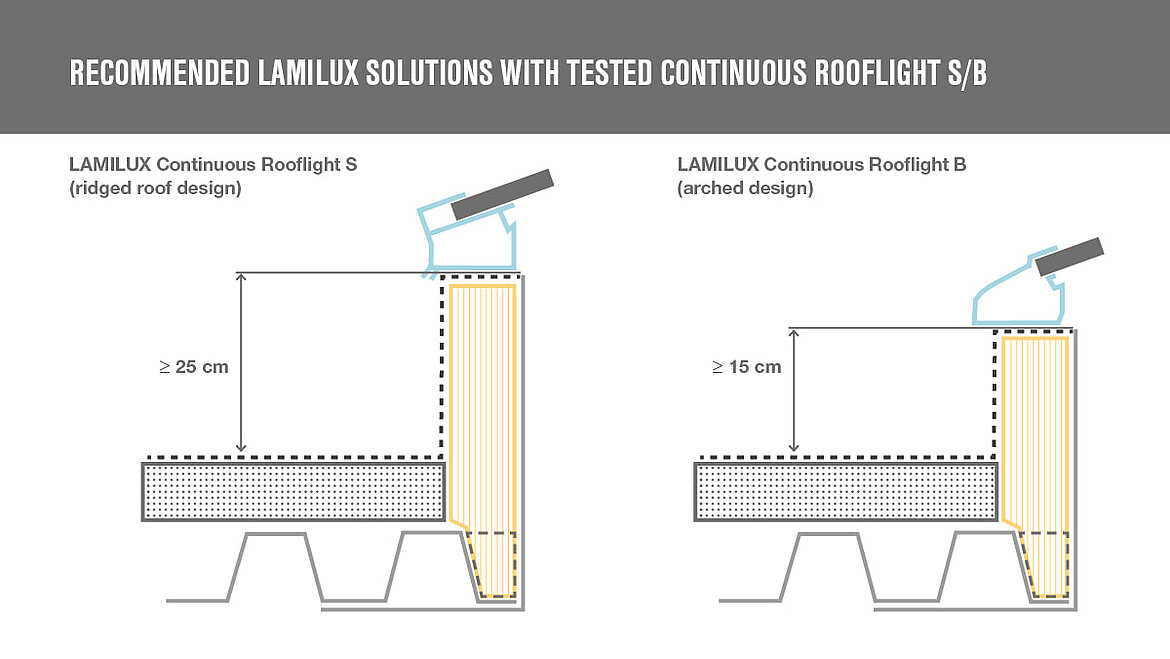Measures for skylights according to DIN 18234
DIN 18234 with its rules on structural fire protection for large roofs with fire exposure from below is relatively recent in comparison to other fire protection standards. It was first introduced in 1992 and took into account the experience that extensive industrial shed constructions in particular could not be saved and burned down completely in the event of a fire despite the successful use of other fire protection measures for decades. It was concluded that this was due to the role that the roof played in spreading the fire. In 2018, the second revision of the standard was published. At the same time, the Specimen List of Technical Building Regulations (M-VVTB) was published for the first time and requires such measures with reference to DIN 18234. Reason enough to take up the topic and examine it more closely. Skylights must also be integrated into the roof according to these standard specifications. LAMILUX Rooflights with GRP upstands in particular take this into account: They hardly require any additional measures.
The standard is applicable to flat roofs with an inclination of up to 20 degrees. It does not specify at what size a roof is considered large. In principle, the rules can also be applied to small roofs. The question is rather at what point it is necessary. Guidance can be found in various building regulations, which refer to the standard from 2,000 m² at the latest.
Measures include material and design specifications for individual layers in the roof structure as well as their combination. There are also specifications for roof penetrations such as rooflight domes and continuous rooflights. Roof penetrations are first divided into three groups according to size: small, medium and large. Medium ones range from 30 cm to 3 m in diameter or square. These are typically rooflights. Large roof penetrations such as continuous rooflights are over 3 m, small ones below that, such as pipe penetrations, drains or penetrating structural components, etc.
Rooflight planning as per DIN 18234
Fire protection as per DIN 18234 is intended to prevent the spread of fire – because roofs in particular lend themselves to the spread of fire if no measures are taken to prevent it. For this reason, there are also important legally prescribed measures for skylights according to DIN 18234. Using the example of a rooflight design, we would like to demonstrate this in this article – and also address the fact that, depending on the manufacturer, rooflights already have integrated measures according to DIN 18234 and thus additional measures can be dispensed with. Here we use diagrams for better illustration, which is why we are providing you with the legend right here.
For rooflights, the standard offers a comprehensive catalogue of measures that covers almost all cases commonly found on the market. Four main questions are considered:
- How is the roof sealant connected?
- What material is the upstand made of?
- Does the rooflight have a border frame?
- Where and with what is the upstand installed in the roof?
For example, elevated roof sheeting requires a cover at the top or surface protection at the bottom. The latter is also always needed for rooflights without a border frame. Due to their low melting temperature, upstands made of PVC or aluminium require special insulation (non-combustible, melting temperature over 1,000 °C) and surface protection all around in 50 cm width.
If all these points are designed ideally, but the upstand is not placed directly on the bottom of the load-bearing shell, but above the insulation on a wooden plank, this alone makes special insulation and surface protection necessary again. In addition, the wooden plank must be framed with at least 2 mm thick sheet steel. This solution creates a thermal bridge at the base, which can subsequently lead to problems such as condensation or mould formation.
With the LAMILUX solution for rooflights, no additional measures are necessary apart from the obligatory profile fillers. Here, the GRP upstand stands directly on the load-bearing shell and seals off the roof structure. This means that no special insulation, no gravel fill and no special covers are required. This not only prevents fire spread on the roof, but also the thermal bridge between the upstand and the sealing level.
Continuous rooflight planning as per DIN 18234
Continuous rooflights count as large penetrations in the roof surface. And DIN 18234 must also be complied with for continuous rooflights. They essentially require three measures:
- a frame height of at least 25 cm
- non-combustible insulation with a melting temperature above 1,000 °C in a width of at least 50 cm all around
- equally wide heavy surface protection, mostly as gravel fill, all around
On the left of the graphic, the heavy surface protection is shown as gravel fill. Surface protection can be omitted if the base profile of the continuous rooflight has a specific geometry - as shown on the right. However, there are currently no products with the corresponding profile geometry available on the market.
In addition to concrete measures, the standard alternatively describes a fire test with the help of which the suitability of certain system structures can be individually tested. This is the path chosen by the manufacturer of skylight systems LAMILUX. With the LAMILUX Continuous Rooflight B (see image 6, right), no additional measures are required with the exception of the profile fillers in the cross joint. The LAMILUX guiding detail on which the test is based provides for non-combustible frame insulation and manages with a frame height of only 15 cm. The less common LAMILUX Continuous Rooflight S also has a comparable system certificate. It differs only in terms of the minimum frame height (see image 6, left).
Interactively plan any project with skylights according to DIN 18234
There are dozens of such special cases and combination options for skylight systems and skylights according to DIN 18234. To help you keep an overview, LAMILUX has developed an interactive planning aid that records all design options in a few simple queries, outputs the necessary measures and offers a less costly alternative solution.


